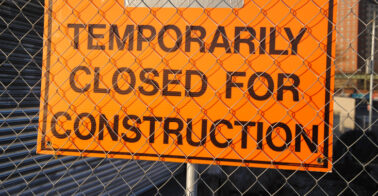How to Make Sure Your Subcontractors Finish Their Work


As the construction industry has rebounded since 2008 and continued to grow to this day, the biggest concern in the industry is finding dependable, qualified resources, specifically subcontractors, to work with on new and ongoing projects. As more and more subcontractors are needed to complete the growing number of projects, it becomes more and more likely that you’ll have to work with one who you haven’t had to rely on before. How do you know who you can depend on?
The Possibility of Subcontractor Default
Many contractors are being forced to overlook subcontractor default as a possibility as their desperation in searching for a subcontractor overrules any misgivings. But even one subcontractor default on a project can cause a crippling loss and delay project completion. Even reliable subcontractors have become less reliable as the industry has rebounded as they have had to stretch themselves thinner than ever before, causing them to overextend the capital and manpower they have at their disposal. But there are ways, as a contractor, that you can mitigate this risk of default.
Surety bonds or subcontractor default insurance have been the go-to’s for the industry to mitigate against subcontractor default, but the most reliably proven way to guard against default seems to be subcontractor pre-qualification. Pre-qualification allows contractors to take a big picture look at subcontractors to best determine whether there is a substantial risk of default before entering a business relationship with them.
Subcontractor financial stability is the first thing contractors have to look at in the pre-qualification process. Current financial statements and the last three years of gross earnings are generally what a contractor needs to adequately judge a subcontractor’s stability and track record. Once all necessary financial statements are received, compare assets to debt level to decide upon the amount of risk a certain subcontractor is coupled with. Contractors should also ensure that subcontractors provide them with additional information if needed as the process advances.
Subs may be uncomfortable with the amount of financial data requested by a potential contractor in a pre-qualification process, but a contractor can always ask for a document detailing the last few years of revenue of the subcontractor and dollar amounts for projects committed for the current year. This information, while not as detailed, can provide a way to calculate, on your own, if the subcontractor would be overextending itself with any additional projects.
Get the Complete Picture
Contractors should also request as much of a complete picture of the subcontractor’s portfolio as possible. Solicit information on contracted projects such as contract value, location, size, estimated date of completion, and staffing requirements. This will, again, provide an indicator of whether the sub has spread itself too thin and would be able to adequately take on a contractor’s additional project. The subcontractor should also provide a contact on each of its projects, allowing a contractor to discover if there have been any safety, timing, or other concerns regarding the subcontractor’s work. References can also detail the subcontractor’s time and budget performances as well as whether they’d work with the sub in the future.
A subcontractor’s safety record should be an especially deeply looked into area. For risks above a sub’s experience modification rate threshold, contractors should request specific information. OSHA citations and workplace injuries should also be of concern.
Make Sure Data is Current
Non-current data is much less useful than more up to date information. Subcontractors could have only extended themselves too far within a very recent period, making last year or the year before’s data irrelevant at best and misleading at worst. Contractors should have subs periodically update financial information and information about contracted projects annually or possibly even more often than that. Pre-qualification should be an ongoing process as subcontractors gain and lose work as well as capital and manpower.
The possibility of subcontractor default never fully dissipates. Pre-qualification, in addition to surety bonds and other insurance, may be the best way to most fully guard against the possibility of subcontractor default. Learn more about how to make sure your subcontractors finish their work.
Colonial Surety Company offers the direct and digital way to obtain bid and payment/performance bonds for contract surety. Having your single and aggregate limits in writing allows you to update your work on hand and adjust bonding capacity in real time. We are the insurance company — which means no agent, no broker, and no middleman. We make it easy to obtain your bond. The steps are easy — get a quote online, fill out your information, satisfy underwriting requirements, and enter your payment method. It’s that simple!


